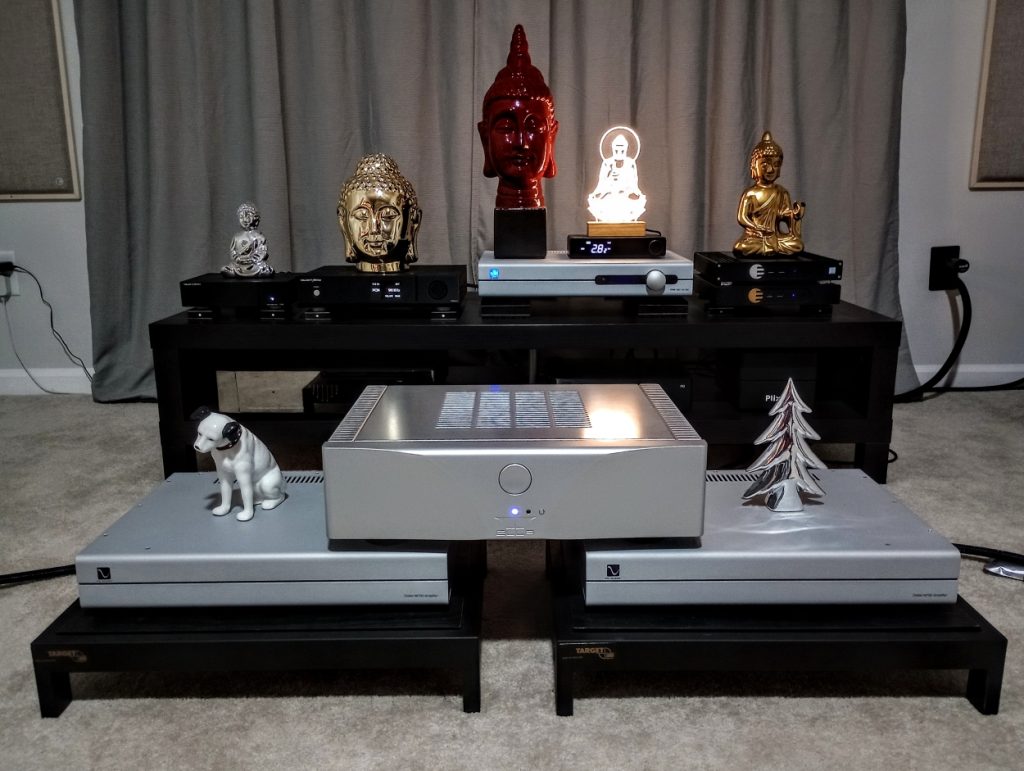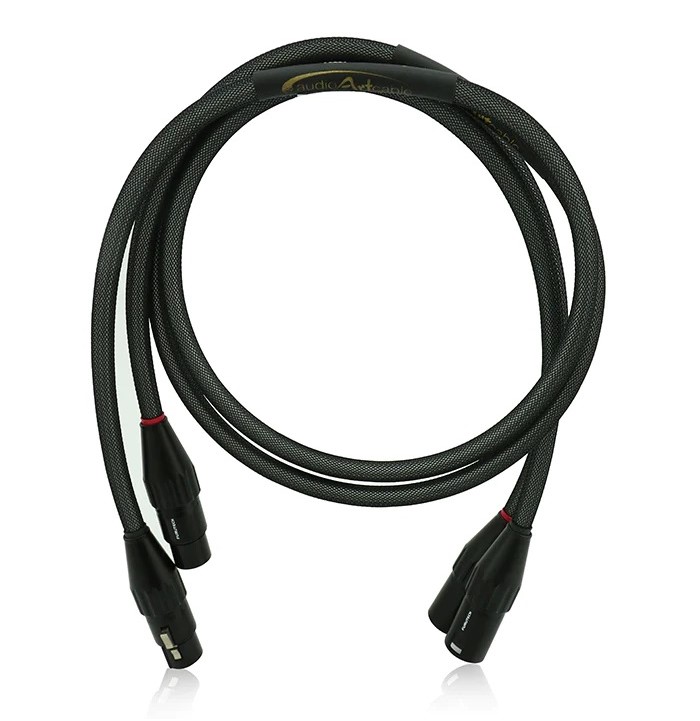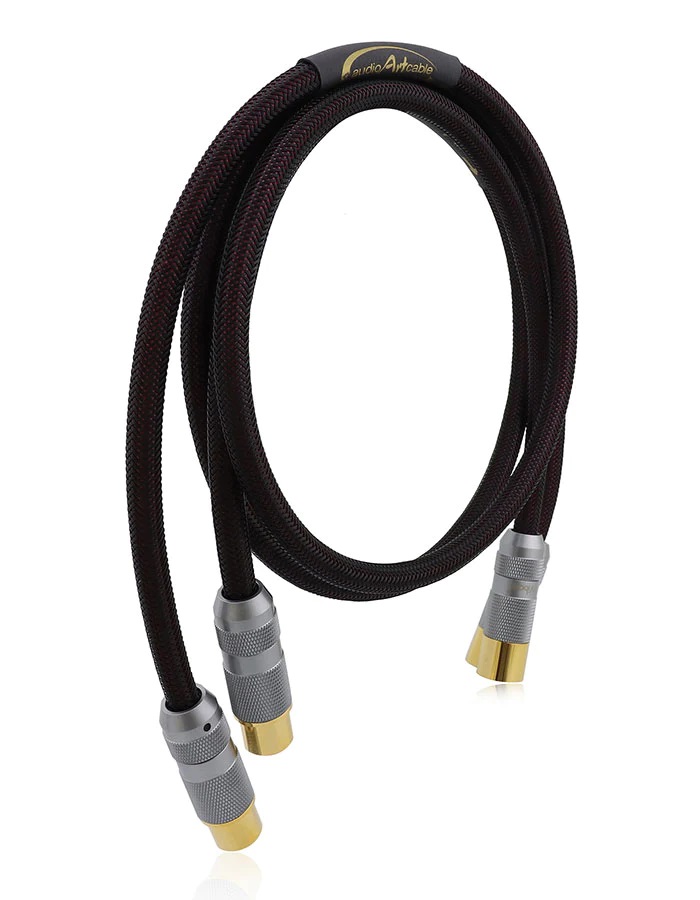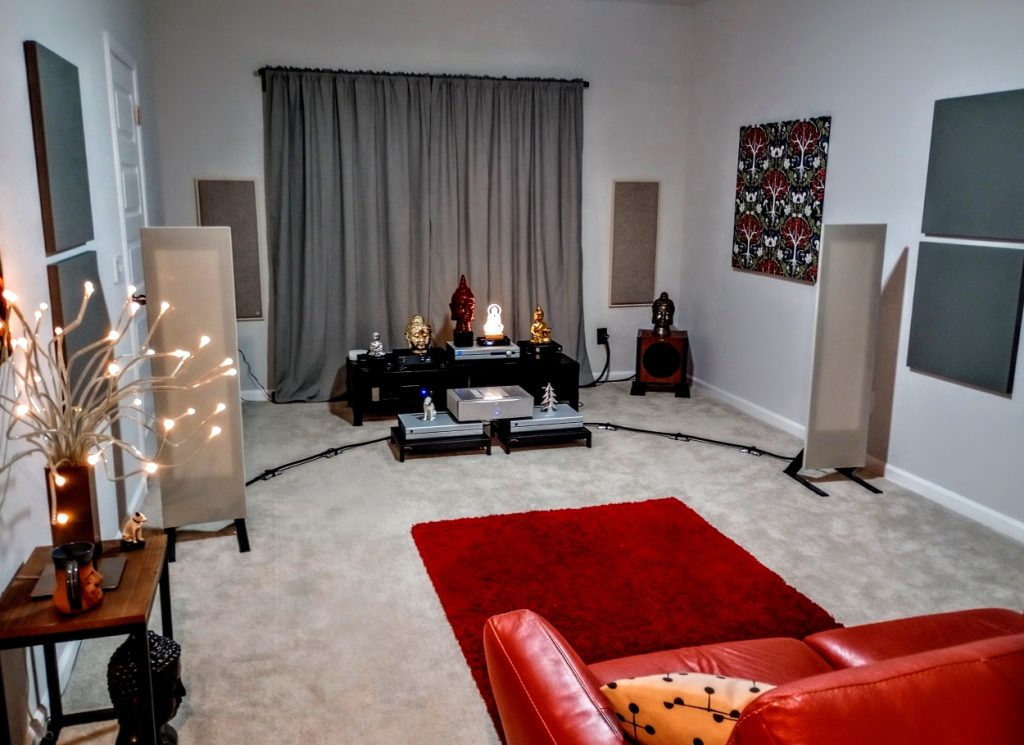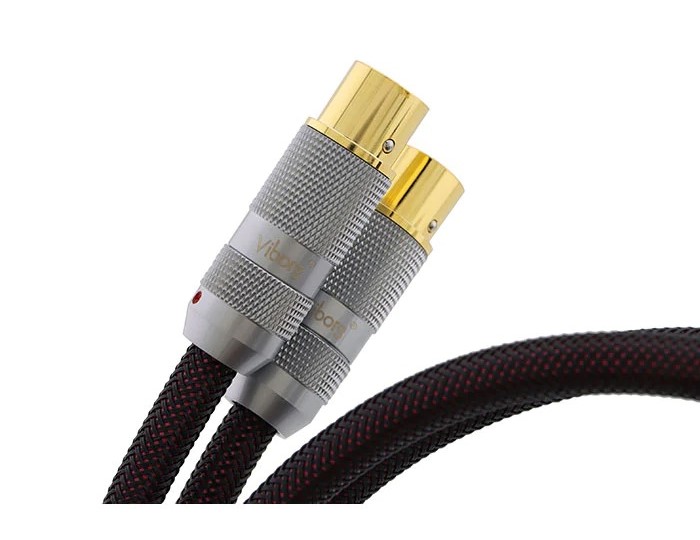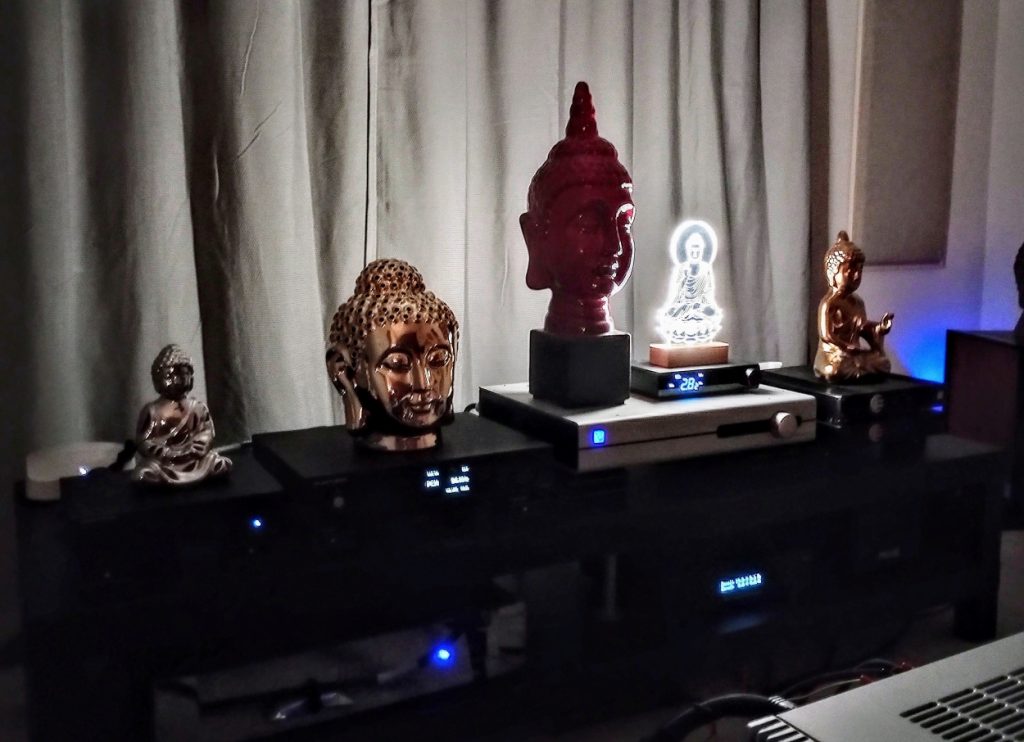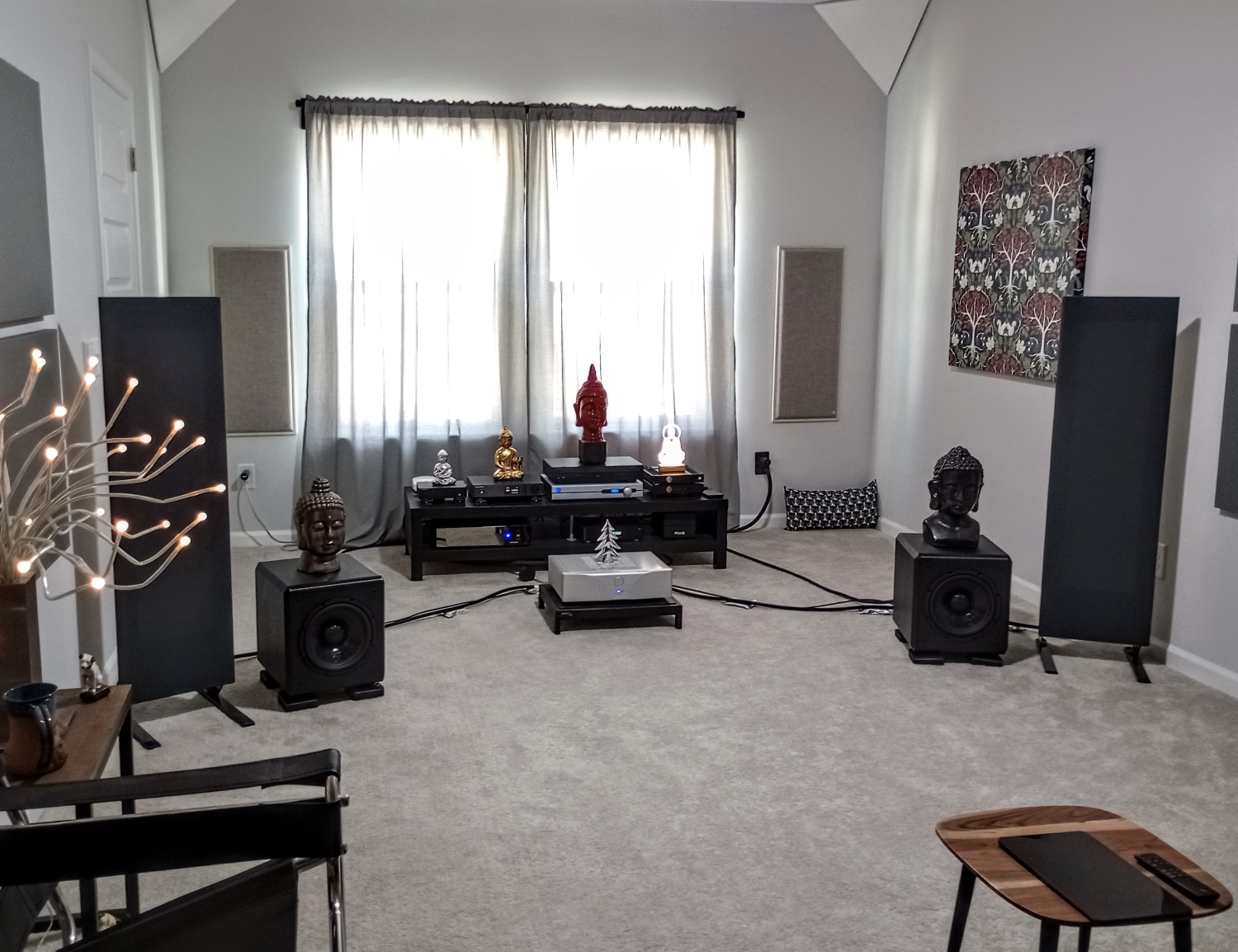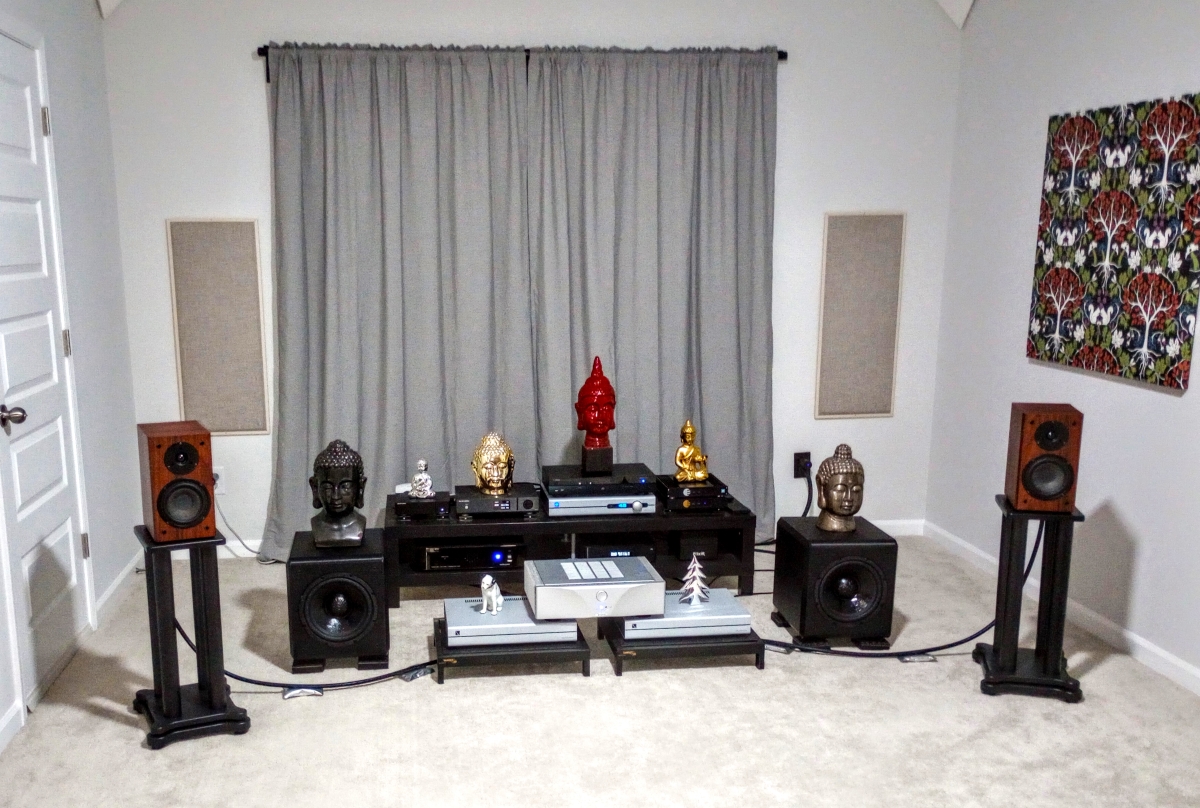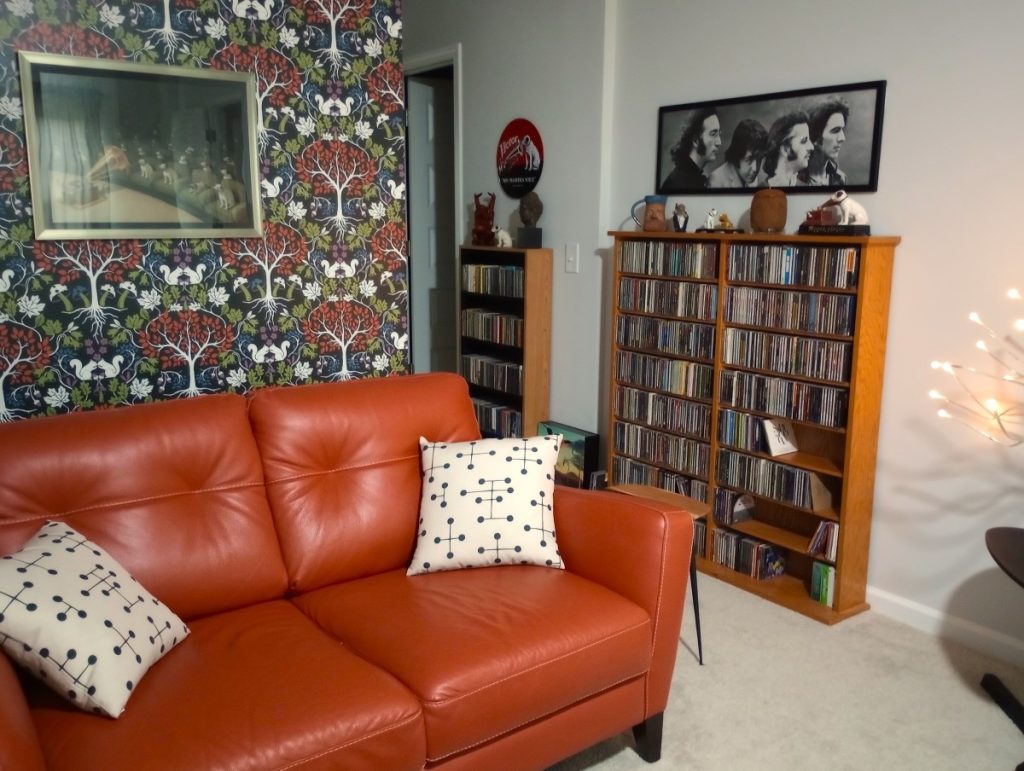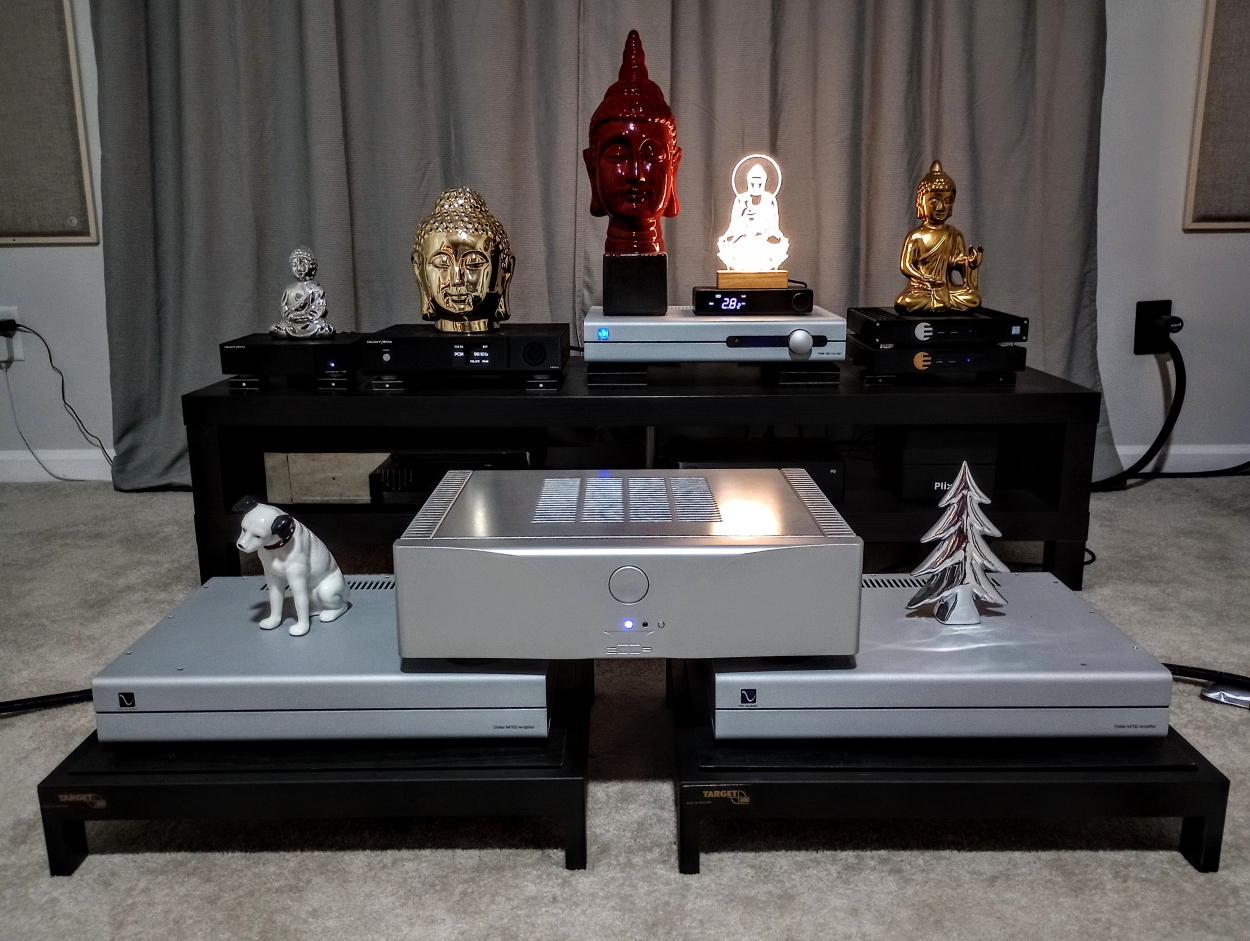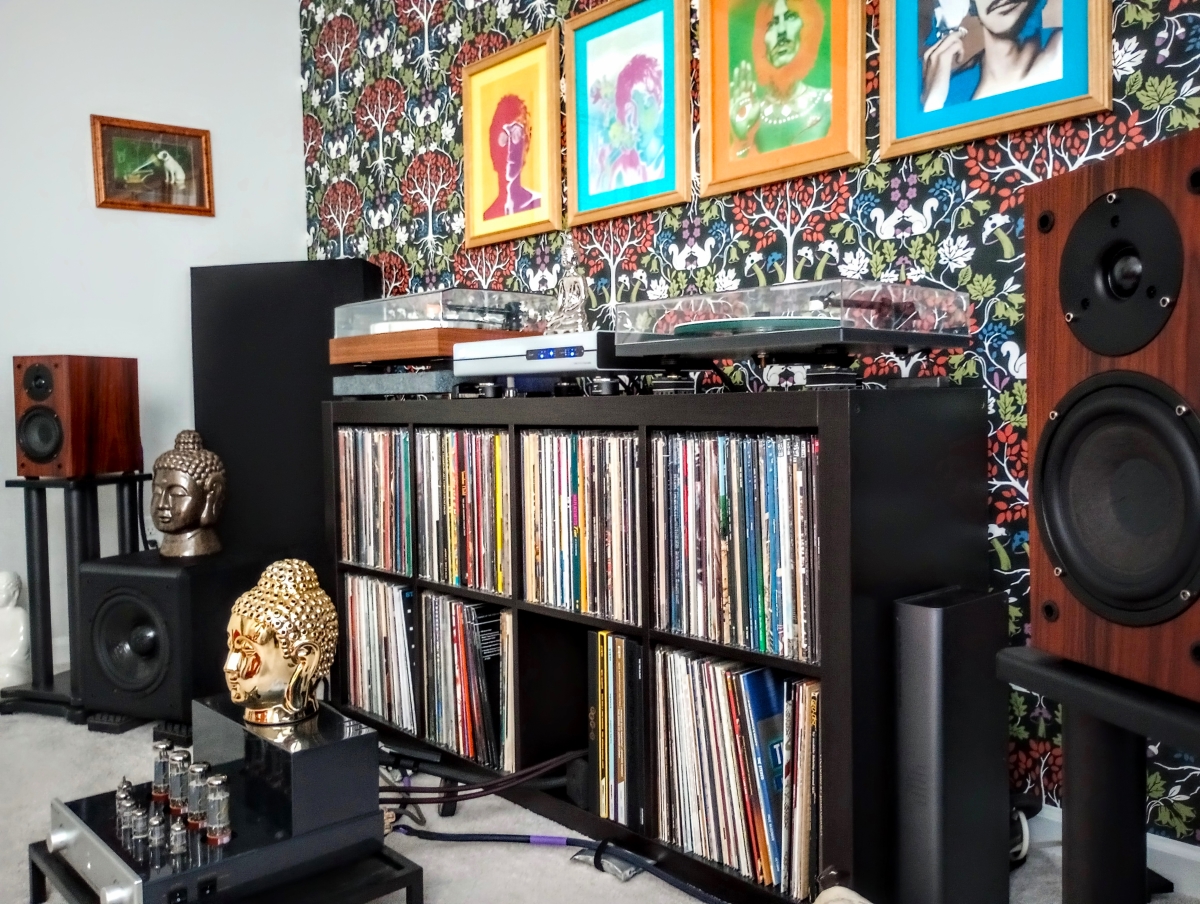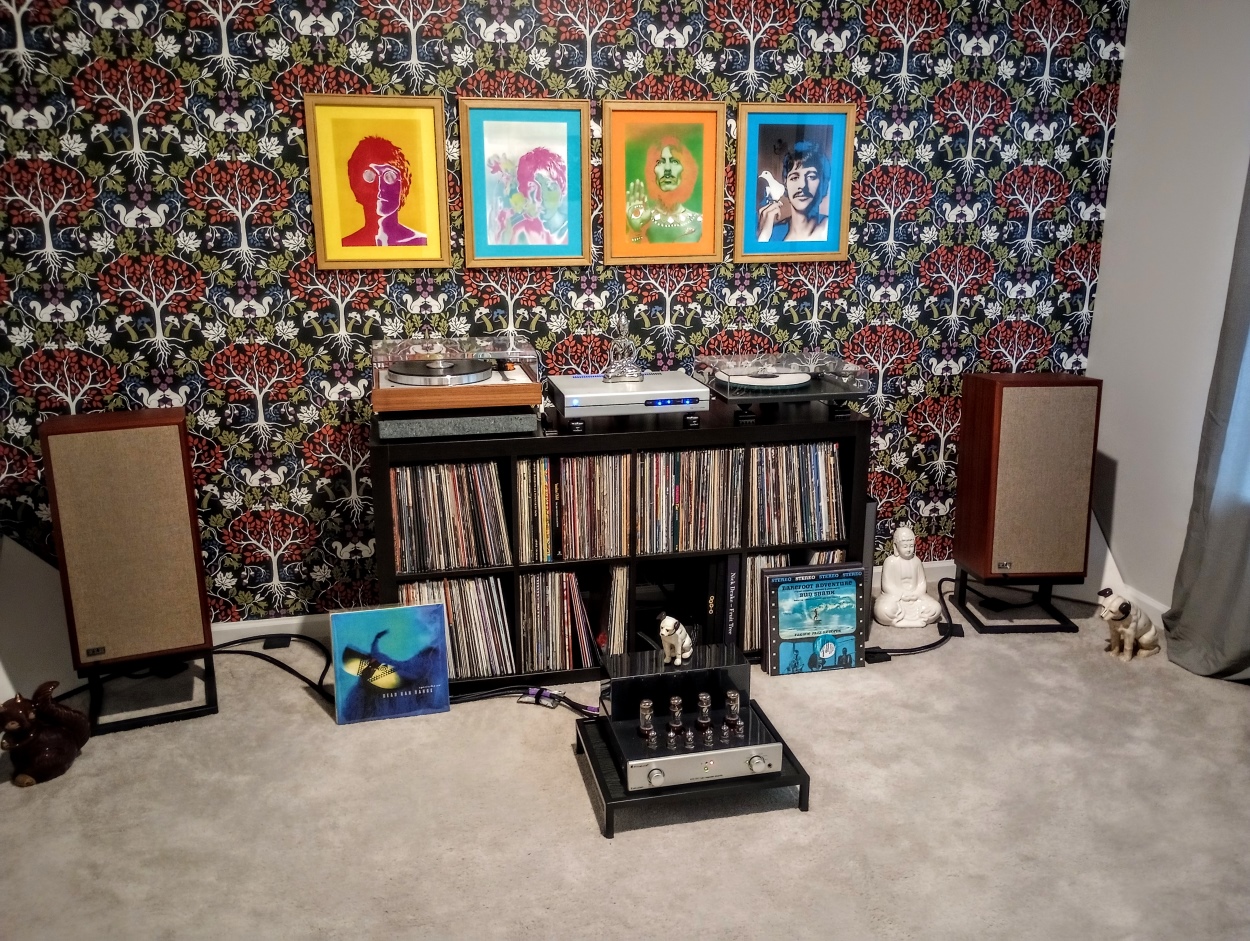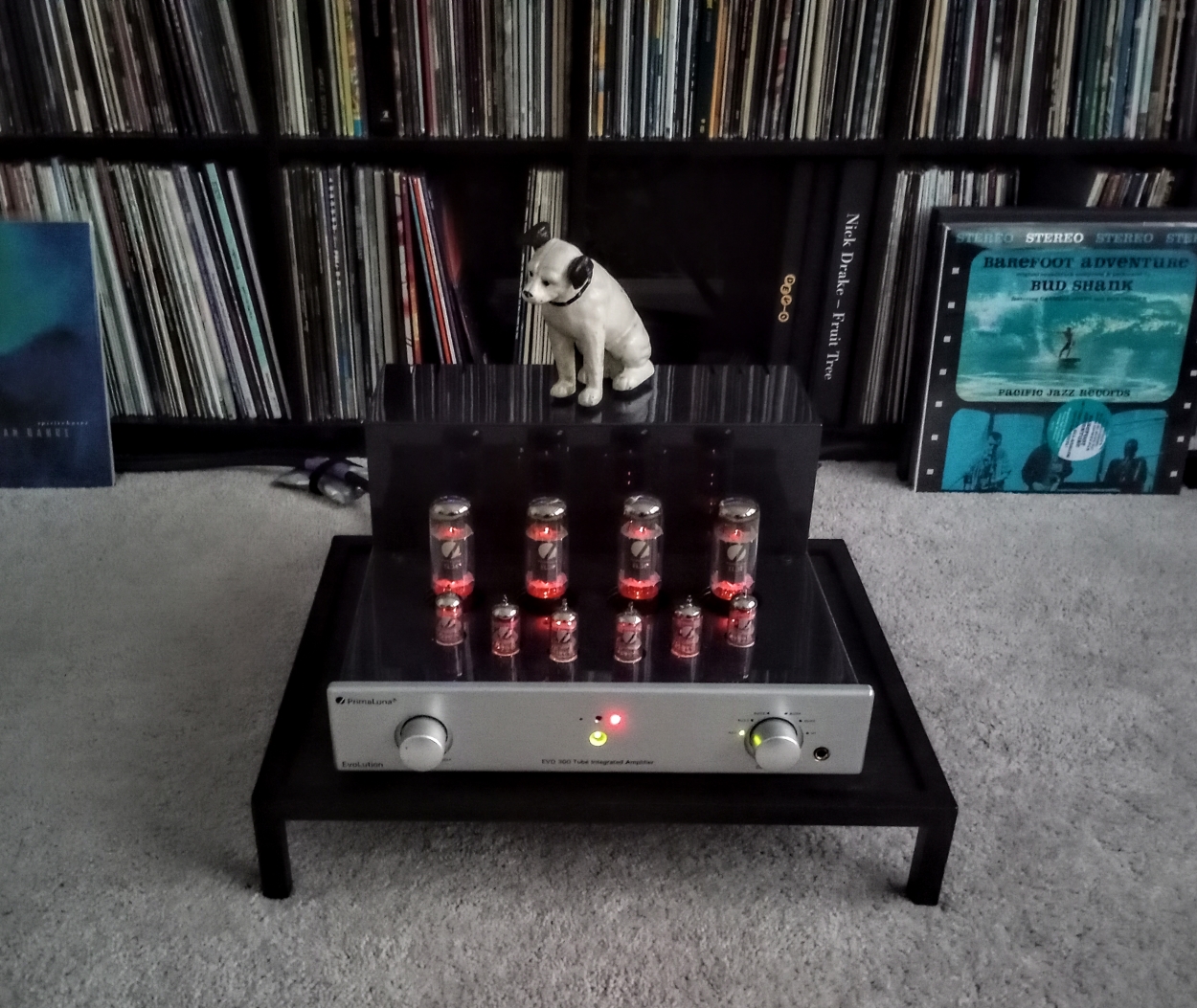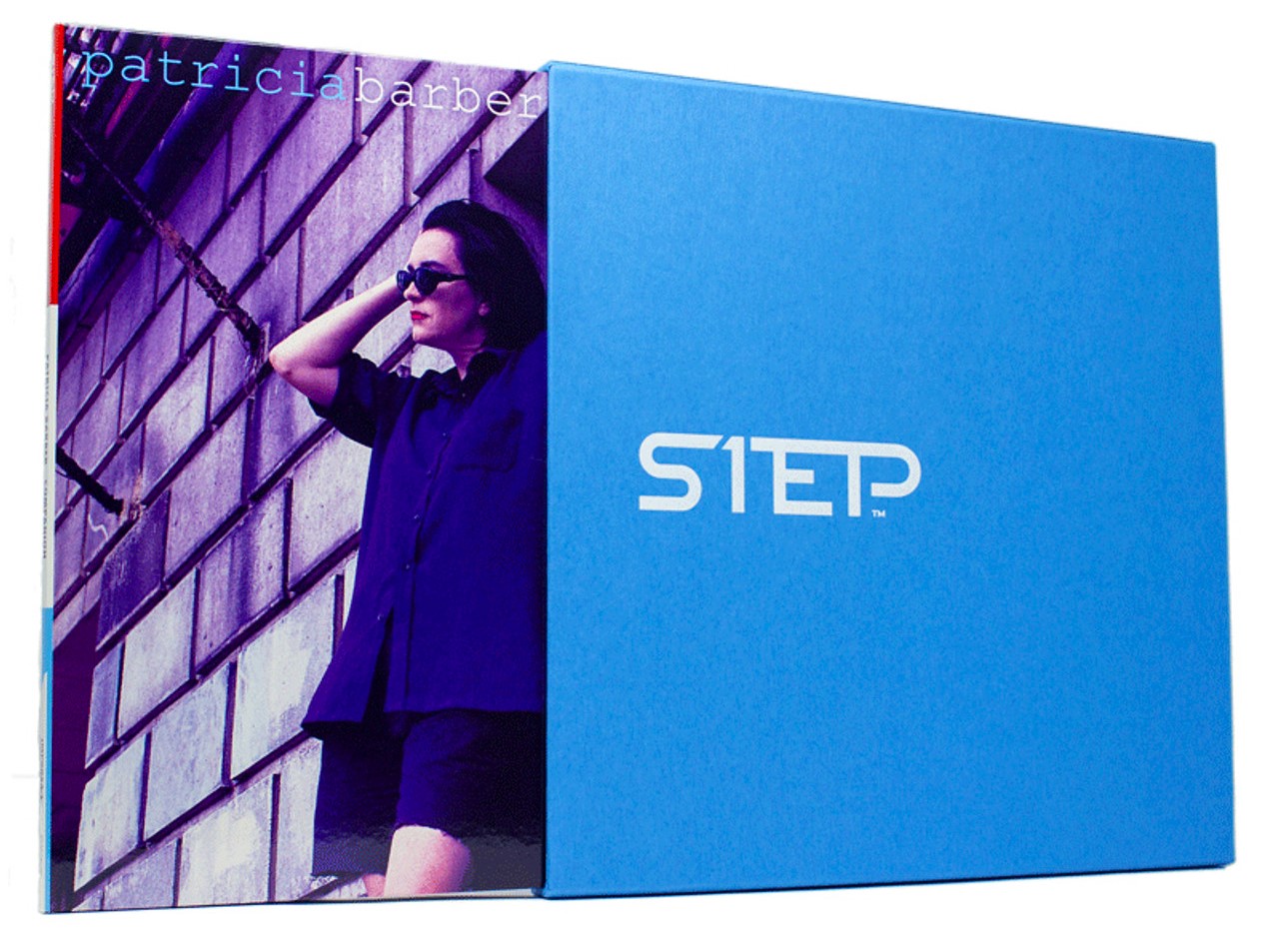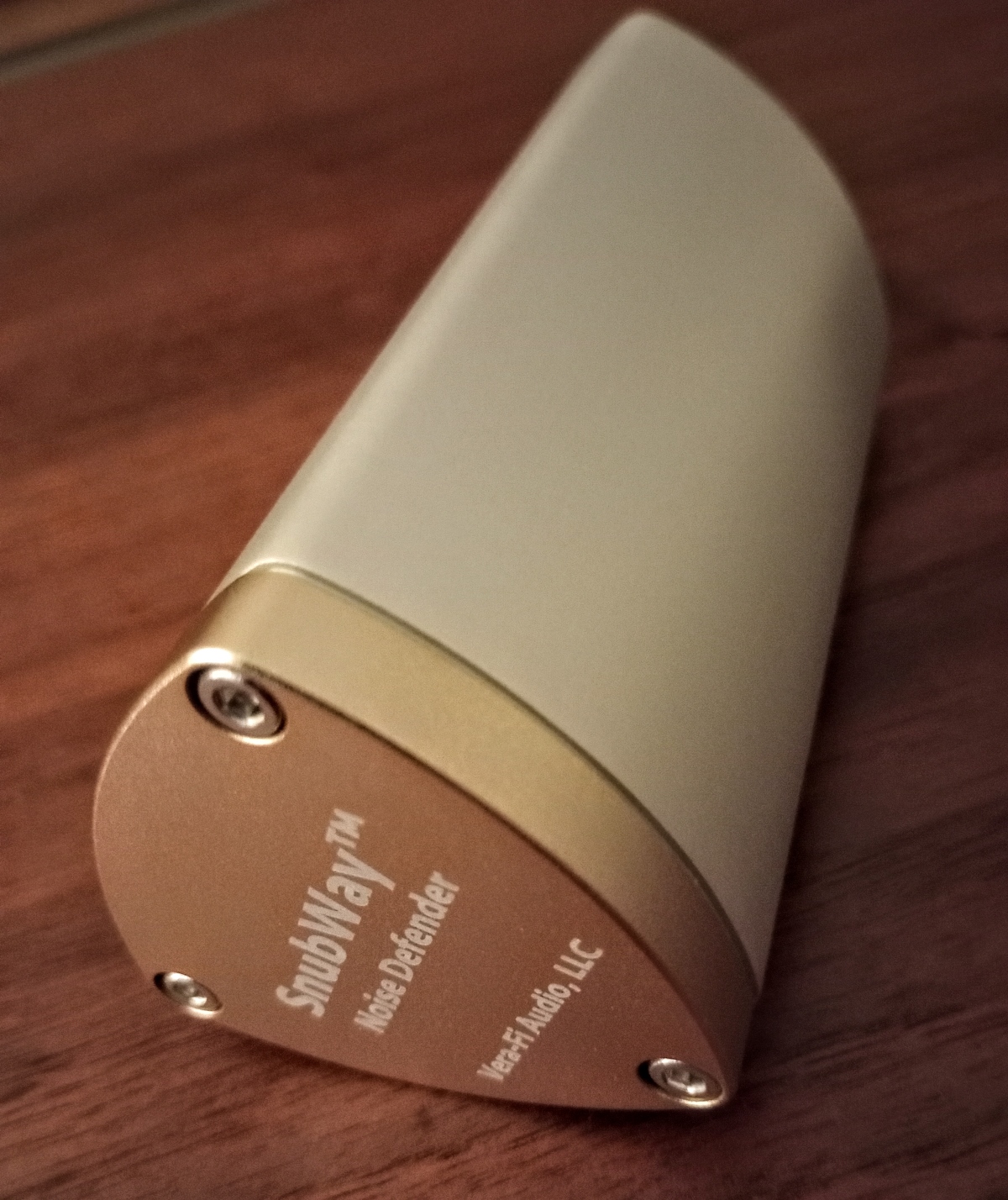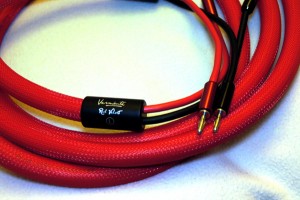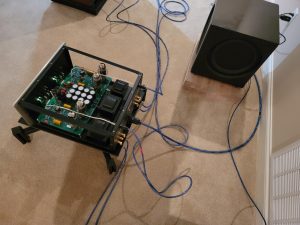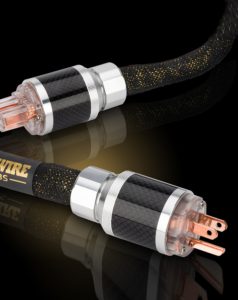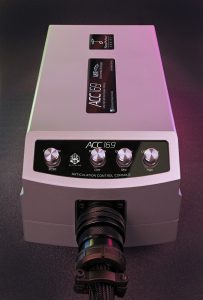I've always believed in the importance of well-constructed audio cables, and my systems of the last five or so years have been built around expensive (if not completely esoteric) cables from highly regarded manufacturers. I simply believed that logically, having well-made cables of a higher pedigree would give my systems a more legitimate claim to occupying a place in the high-end. I'd never found myself in a situation where the want or need to seriously compare cables had ever been a pressing issue. Cables can be a particularly gray area, especially in high-end audio, where ignorance—as they say—is bliss, isn't it?
Just prior to my move to the Charleston area last year, the inevitable happened; I'd just incorporated the Gustard X26 Pro DAC and C-18 constant temperature clock into my digital system, and quickly found myself in need of a more substantial BNC cable to complete the connection between the DAC and Clock. Gustard's supplied BNC cable and another I purchased online from a pro audio retailer offered less than compelling performance; I needed help, and fast!
Thankfully Rob Fritz of Audio Art Cable came to the rescue and sent both the Audio Art D-1SE2 and Statement BNC cables, which based on appearance alone were jewel-like works of art in comparison to the lowly stock and pro audio cables I had on hand. And while I avoid broad, sweeping proclamations about the superiority of one cable versus another, my evaluation of the truly brilliant Audio Art BNC cables proved to me that significant differences can easily be heard between cables. Even digital cables: the improved signal flow provided by the Audio Art BNC cables (especially the Statement BNC) allowed me to hear an enhanced level of musicality and fine detail that almost overwhelmed me with its goodness. Audio Art's BNC digital cables aren't inexpensive, but they allowed my digital system to perform at its peak for the first time ever, and that makes their price point seem well within reason. You can read my review of the Audio Art D-1SE2 and Statement BNC digital cables HERE.
I generally find myself fairly methodical and astute at diagnosing system issues, and can usually pinpoint the culprit in fairly short order. At about the same time as my BNC cable shootout was progressing, another persistent problem reared its ugly head again; this time it involved the Naiu Laboratories Ella power amp that's been in my digital system for the last year or so. Which I had become convinced was malfunctioning; the usual process of elimination continued to point to the amp as the source of the problem. Numerous emails and calls to Dalibor Kasac and Robert Devcic of Euphony Audio (Naiu Labs worldwide distributor) served to heighten the mystery; the Ella, in their opinion, was literally bulletproof, and in a decade of field use and testing had never suffered a single failure—ever! In their defense, Ella doubles its power output into 2 ohm loads and can suffer a dead short without any negative effects; it's a beast of an amp, for sure. The Euphony guys remained unconvinced, and the plot thickened, but I eventually came to the realization that the intermittent problem was not within the amp, but was caused by a faulty balanced interconnect cable.
Buoyed by my recent experiences with Audio Art Cables, I reached out to Rob Fritz and he offered to send a 2.5 meter balanced cable pair for evaluation. He actually insisted on sending two different balanced cable sets, the e2.2 Cryo cables and one from a new line Audio Art was just putting into production, the Copper Cryo OCC (OHNO Continuous Cast) cables. I thanked Rob profusely, and immediately took a look online at the E2.2 Cryo cables; nothing was yet available for the Copper Cryo OCC cables, and for whatever reason, I assumed they were probably a notch below the great-looking e2.2 Cryo in Audio Art's pecking order. The cables were scheduled to arrive in about two weeks, but actually showed up more quickly. My digital system has been static for the last year or so, so I have a very good baseline idea of how it sounds. With the principal difference being the insertion of a new cable, this should be a snap, right?
Audio Art's First Batch of XLR Cables Arrive - and the Real Fun Begins!
Upon opening Rob Fritz's package, I was immediately struck by two things: the e2.2 Cryo cables appeared to be even more well-built than I'd gathered from my online investigations, and they were terminated with really nice Furutech FP 701/702(G) XLR connectors. But upon opening the packaging that contained the Copper Cryo OCC cables, they seemed to be from another universe entirely! And were much more robustly built than the e2.2 Cryo pair, with termination that featured beautiful Viborg XM/XF-202(G) XLR connectors. Taking the phrase "jewel-like" into another cosmos completely; the Viborg connectors are beautifully, heavily triple plated, and are literally the ne plus ultra in high-end audio cable termination. Damn! Color me impressed—obviously my small-market-tuned audio brain wasn't thinking on a higher level when I incorrectly surmised that the Copper Cryo OCC XLRs were a notch below the e2.2 Cryo cables!
Audio Art's e2.2 Cryo interconnects utilize multiple stranded, silver-plated, OFC copper conductors insulated in an ultra-low loss foamed Polyethylene dielectric, also in a low capacitance design. 100% aluminum Mylar shielding provides superior immunity to noise. XLR interconnects are terminated with Furutech's FP-701/702(G) gold-plated copper alloy XLR connectors that incorporate Furutech's Pure Transmission technology. Which applies optimized engineering solutions to well-known problems such as contact resistance, EMI and RFI rejection, and grounding, while using the finest materials available for performance audio. The FP-701/702(G) features 24-carat gold-plated eutectic cast copper alloy α (Alpha) pins, a copper alloy body and PBT plus fiberglass insulation.
At the core of Audio Art's new Copper Cryo OCC interconnect cables is their new, ultra-high purity, dual shielded OHNO Continuous Cast copper (OCC) technology. Copper Cryo OCC maintains a highly resolving character, but also offers the natural and organic warmth of pure copper that appeals to many audiophiles. The cable design utilizes multiple stranded, OCC copper conductors insulated with an ultra-low loss foamed Polyethylene dielectric in a low capacitance design. 100% aluminum Mylar shielding provides superior immunity to noise. XLR balanced interconnects are terminated with premium Viborg XM/XF-202(G) XLR connectors that are made from pure copper and are triple plated with gold. Single-ended RCA interconnects are terminated with premium Viborg VR-109(G) RCA plugs that are made from pure copper that's gold plated for superior conductivity. The Viborg connectors are thermochemically inert, and their heavy plating provides superior resistance to corrosion and oxidation.
Despite being nearly blinded by the serious glint of those Viborg connectors, the correct evaluation approach was to place the less expensive e2.2 Cryo cables into the system first. Helping to make my review process even more effortless, Rob Fritz had preconditioned both sets of cables with his audiodharma Cable Cooker, so the process was about as plug-and-play as it gets in this type of situation. No lengthy burn-in was required, and I was free to listen critically right out of the gate. I decided to listen to the same group of tracks that I used to evaluate the Audio Art BNC cables, starting with the DSD 64 file of Harry Connick, Jr's "A Nightingale Sang In Berkeley Square." It's a really well-recorded jazz trio track where the performers are literally "in the room" with you on a good system—which is typically the case as played via my Magneplanar loudspeakers.
First Listen to the Audio Art Balanced Cables
After making the e2.2 Cryo balanced connections between my PS Audio Stellar preamplifier and the Naiu Labs Ella amplifier, I took a seat, and punched up the DSD track for "A Nightingale Sang In Berkeley Square" on my tablet. As the music began playing across the system, my jaw literally dropped and my mouth was probably agape with incredulity. A coastal Carolina albatross could have easily flown into it, so awestruck was I by what I was hearing. The music was presented with an enhanced degree of realism, a more defined soundstage, and a substantially increased scale of image, such that I felt as though I could actually reach out and touch the players! I had to hit the replay button to confirm that I wasn't just having a fever dream!
When I said that my chosen music track was a good representation of the sound of the performers "in the room" with you, what I probably should have said was that prior to the insertion of the Audio Art Cable e2.2 Cryo, the performers were "in the room with you, playing from a nice boombox." I'm not joking—it was as if I was listening to a completely different system, not the one that I'd become so very comfortable with. So many things in the music simultaneously snapped into place; the stereo image, the soundstage, the improved musicality of the system. The overall synergy was so shockingly good, I couldn't wait any longer, and immediately got up and replaced the e2.2 Cryo cables with the Copper Cryo OCC XLRs.
The difference with the Copper Cryo OCC XLRs was as startlingly apparent as when I'd pressed the play button with the e2.2 Cryo cables. The upright bass was firmer and deeper than I'd ever heard on this track, Harry Connick's vocal was more liquid and more clearly centered, and Branford Marsalis' tenor sax now presented a heightened level of realism. Over the course of a single album track, my system had gone from sounding like its usual pretty good self to sounding like I'd undergone significant upgrades in all source components, amplifiers, and loudspeakers. I heard an abundance of fine detail in the music, and my ability to suspend my disbelief that I was listening to a live event rather than a recording was almost complete. And this was from the insertion of a single pair of XLR cables! I'd been praising the Naiu Labs Ella amp for months as being a game changer in terms of what a $12k amplifier can offer compared to the mega-buck amps that are everywhere in the high end—I now feel like I need to revisit that assessment and heap even more praise on the Ella! It was almost as if for nearly a year, I'd only been hearing a faint impression of a really good system, and now I was getting the full effect. The Copper Cryo OCC cables nearly blinded me with their Viborg-centric beauty, but hearing them was revelatory, to say the least!
My impressions of the Gustard X26 Pro DAC and C-18 Clock as connected by the Audio Art Cable Statement BNC has also risen—the efficacy of this combination is significantly better than I'd previously given it credit for. As blown away as I was by the differences between multiple BNC cables, you'd think I wouldn't have experienced so much surprise at the not subtle contrasts between the XLR cables, but whoa—that was totally unexpected! I immediately fired off an email to Rob Fritz, and offered him an analogy for my initial listening experiences with the two XLR cable sets he'd sent: while the e2.2 Cryo's were absolutely superb, hearing the Copper Cryo OCC's for me "wasn't like opening a window into the sound, it was more like opening the hydraulic doors to an aircraft hangar!" The Audio Art Cable Copper Cryo OCC XLRs at this point are unquestionably my new reference interconnect, with the e2.2 Cryo's following closely behind.
Coda
Adding Audio Art's Statement BNC digital cable allowed me for the first time to hear the benefit of adding an external clock to my digital system. The improvement in my sound quality was very closely akin to an artist suddenly having a greater selection of finely-shaded colors in his paint box; that broader range of colors would help make his tonal possibilities unlimited. Adding the e2.2 Cryo—and especially the Copper Cryo OCC balanced cables—took my system's presentation to near technicolor in comparison! The insertion of the BNC digital cable made perfect sense logically; it allowed the DAC and Clock to talk to each other more effectively, helping to present the music with greater clarity and musicality. But to say that I was boggled by the improvements wrought by the insertion of a single interconnect cable was a complete understatement!
I reached out to Dave Clark and Dr. David Robinson at Positive Feedback to hopefully get some illumination on my unusual (for me, at least!) experiences with the Audio Art Cable interconnects. Both gave me essentially the same response: it's all about system synergy. It's not that your current cables aren't good, it's more likely that they aren't reacting synergistically with your components. David Robinson took it a step further; based on my overwhelmingly positive experiences with the Audio Art Cables that made such a difference for me, he encouraged me to reach out to Rob Fritz to see if he'd be interested in setting me up with a "loom" of his cables (see that review HERE). The prospects of which greatly excited me, especially in view of my nearly out-of-body experience with his e2.2 Cryo and Copper Cryo OCC balanced interconnects.
I'll continue with this journey in the next installment!
e2.2 Cryo Balanced Interconnect, 2 Meter Pair
Retail: $535
Copper Cryo OCC Balanced Interconnect, 2 Meter Pair
Retail: $660
Audio Art Cable
All images supplied by Audio Art Cable and the author




